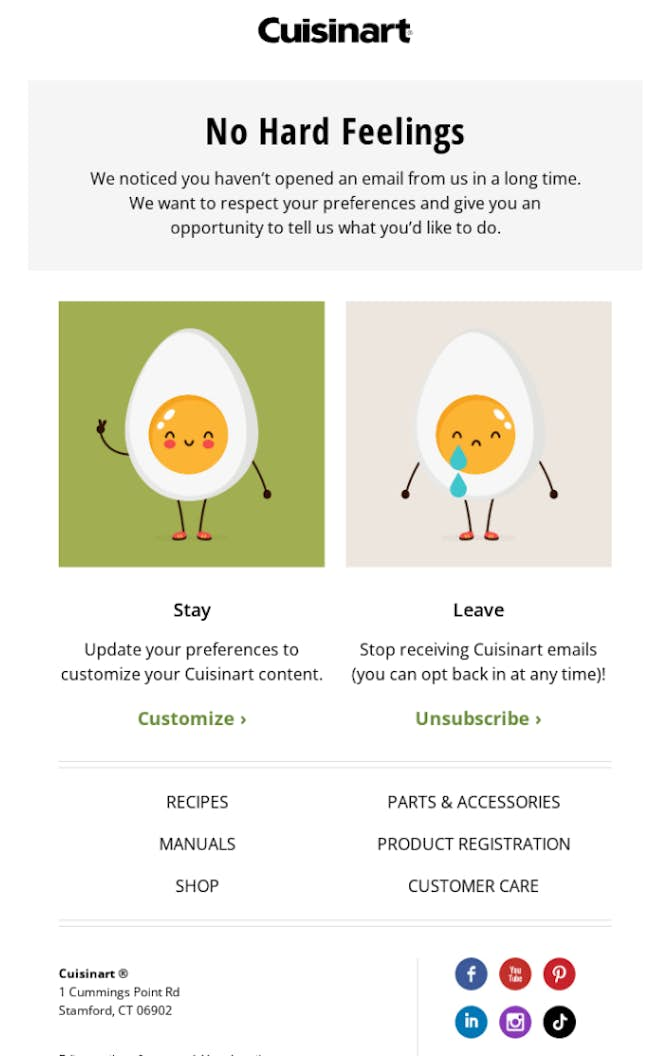Feb 12, 2024
Google & Yahoo Email Changes 2024: What Do They Mean for Marketers?
Email spam has been something consumers have complained about for years and if they are not happy, they’re not going to buy a product or service from you.
It’s not only spam messages that are annoying but an inability to unsubscribe from unwanted emails (or keep receiving them even when you do!)
Plus as data privacy becomes more important along with compliance with regulations like GDPR and CAN-SPAM, these new changes can help protect the personal information of your customers - current and future.
To rectify this, Google and Yahoo have made changes for bulk senders of emails (5,000+ per day) with compliance expected from February 2024. These new standards will impact three key areas:
While most digital marketers are already aware of these standards, and are compliant, it’s important to make sure you’ve covered all bases outlined in these new regulations to avoid your emails ending up in spam or not reaching your audience at all.
In this blog, we’ll explore the new regulations from Google and Yahoo, and look at ways you can adhere to them and clean up your email lists. Let’s get started.
Email Campaign Calendar 2024
1) Unsubscribe and opt-out links
While many companies make it easy for consumers to unsubscribe from their email newsletters, there are just as many that don’t.
These new Google and Yahoo regulations mean that companies have to provide a one-click unsubscribe option in all emails. In addition, senders must process and honor unsubscribe requests within two days.
It’s worth noting that you can also provide an option for people to opt out of a particular email or newsletter. For example, if you create a number of newsletters on different topics a recipient may choose to opt out of one but remain on your mailing list for other communications.
2) Spam threshold
As part of these changes, the email providers want to reduce spam thresholds. For Google, this means keeping spam rates below 0.10% and avoiding reaching a rate of 0.30% or higher.
“Moving forward, we’ll enforce a clear spam rate threshold that senders must stay under to ensure Gmail recipients aren’t bombarded with unwanted messages,” Google wrote in a blog post. “This is an industry first, and as a result, you should see even less spam in your inbox.”
So examine your current spam rate thresholds and if you’re getting anywhere near 0.30% (or 2-3 complaints every thousand emails), then review your email marketing strategy and audit your lists.
3) Email authentication
Both Gmail and Yahoo require email senders to authenticate their emails. What this means is that you must add certain records to your Domain Name System (DNS) provider to send emails.
This requires your IT department to create records for three areas:
- SPF - This record checks if the sending server is an authorized sender
- DKIM - Detects forged sender domains by creating digitally verifiable fingerprints
- DMARC - This expands on SFP and DKIM and allows the domain owner to publish policies that protect from email spoofing.
These records need to be added to your domain and you need to publish a DMARC policy publicly.
Here are two good resources with more information:
- Domain Authentication - Customer.io
- Boost Your Deliverability (and Credibility!) with DMARC - Marketo Engage
How to clean up your email lists
When you clean an email list, you’re looking to remove disengaged, unsubscribed, invalid, or duplicate contacts.
You can then scrub your list by removing emails that:
- Have an incorrect domain name, syntax structure or format
- Are bounced emails
- Spam email addresses
- Catch-all addresses (use a catch-all email checker to find these)
When it comes to disengaged people on your list - those who have not opened or clicked your emails in a while - consider reaching out to them. A simple re-engagement campaign could help to reactivate interest and keep people on your list that are still interested in your brand, product or service.
Here’s a great email from Cuisinart that cuts to the chase and asks people a simple ‘yes’ or ‘no’ to keep receiving emails.

However, if people do not respond to your re-engagement campaign, it’s time to remove them. They can always come back if they want to keep hearing from you.
Attract, engage and influence with digital marketing campaign
Email is one of the oldest marketing channels for a reason - it works! But there are other channels to use alongside email to help generate leads and drive conversions. Our Professional Diploma in Digital Marketing covers key areas such as SEO, social media, analytics, digital strategy, content marketing and email marketing along with how to use AI in your campaigns. Get started today!
Related
Upgrade to Power Membership to continue
your access to thousands of articles, toolkits, podcasts, lessons and much much more.
Become a Power Member- Login
- View Courses
- - - -
- Courses
- Resources
- - - -
- My Account
- Change Password
- Logout





